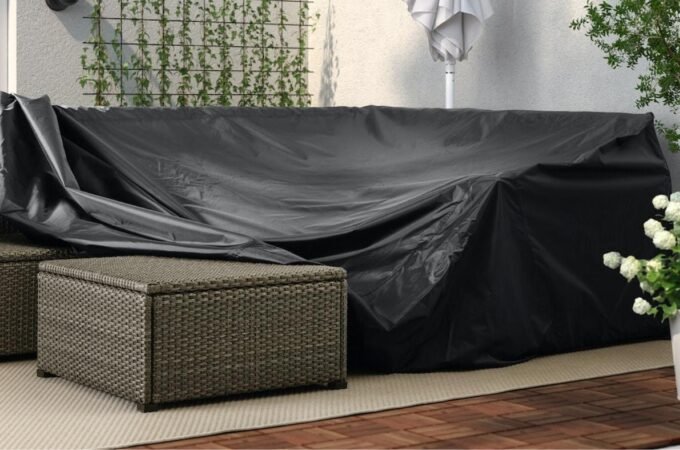
Installing and Maintaining Inline Filters in Your Home
Hidden impurities and sediment buildup in our water sources can lead to a variety of household challenges. Issues like off-color or bad-tasting water, unpleasant odors from faucets, and stains on dishes are common concerns. These problems not only affect daily activities like cooking and bathing but also lead to quicker wear and tear on appliances. For families relying on this water for everyday use, these issues are more than inconveniences — they pose significant health risks.
Fortunately, inline filters for water are a great solution for providing fresh, clean supply on demand. They connect directly to a liquid supply line and are typically installed under the sink. They can also be installed behind an appliance that requires filtration, such as an inline refrigerator filter.
In this quick guide, we’ll show you the simple steps of installing and maintaining these purifiers, ensuring clean and crisp water straight from your supply lines, safeguarding your health, and extending the life of your appliances.
Let’s dive in!
Table of Contents
ToggleHow to install an inline water filter
Installing an inline water filter is a breeze. Follow these simple steps for a quick setup:
- Locate the supply line: Locate the main water filter system under the sink or the inline water filter for the fridge.
- Turn it off: Before installation, shut off the supply source to avoid any leaks or spills.
- Cut the pipe: Use a pipe cutter to make a clean, straight cut in the supply line.
- Attach the filter: Connect the purifier to the cut section, ensuring a snug fit.
- Secure with clamps: Use clamps to secure the device in place, preventing any movement.
- Check for leaks: Turn the H20 supply back on and inspect for any leaks.
- Flush the system: Run water through the filter to flush out any initial impurities.
With these simple steps on how to install inline water filter, you can consistently deliver fresh and clean water from your supply source.
Inline water filter maintenance
To keep your device in top shape and performing optimally, regular maintenance is important.
- Regular checks: Inspect it for sediment buildup and signs of wear.
- Test the water: Check the liquid from the filter regularly to ensure its quality and effectiveness.
- Replace timely: Swap out the cartridge at recommended intervals to maintain optimal performance.
- Clean the housing: Wipe the exterior regularly with a damp cloth to prevent dust and buildup.
- Clean the internal parts: Don’t forget to also gently clean internal components to remove any accumulated debris or contaminants.
- Check connections: Ensure all connections are secure, tightening any loose fittings.
- Monitor flow: Keep an eye on the liquid flow; any significant decrease may indicate a clogged filter.
- Reference the manufacturer’s manual: Consult the user manual for specific maintenance guidelines tailored to your device model.
- Professional servicing: Consider professional servicing annually for a thorough check and to catch any issues early.
How to change inline water filter
Changing inline water filter is crucial for maintaining liquid quality.
- Locate your device: Identify the filter position, typically beneath the sink or behind the refrigerator.
- Turn off your supply lines: This is to prevent leaks during replacement.
- Release pressure: Open a faucet to release pressure in the system.
- Remove the old filter: Disconnect the old device, usually by twisting or pulling it out, depending on the model.
- Install new filter: Place the new purifier into the designated space, ensuring a secure fit.
- Secure connections: Double-check and tighten all connections to prevent leaks.
- Turn on the supply: Restore the supply and check for any initial leaks.
To ensure a consistent supply of clean water and a healthier home, you should regularly change your inline filters. However, make sure that the purifier you purchase is the correct model and size for your system by buying from a reliable seller like Filterway, which offers a variety of trusted options.
How often should you change an inline water filter?
It’s recommended to change your inline filter every 6 months or as specified by the manufacturer. The frequency could vary depending on usage and water condition. Regular replacements ensure continued effectiveness in removing impurities and maintaining water quality.
How do you clean an inline filter?
Start by turning off the supply line and releasing pressure from the inline water filtration system by opening a faucet. Next, carefully remove the filter from its housing, taking care not to cause any spills. Gently clean the device with a soft brush or rinse it under running water to remove accumulated sediment and debris.
For a deeper clean, soak the filter in a vinegar solution for 15-20 minutes or use a mild bleach solution to disinfect it, then thoroughly rinse the device again. Ensure all parts are completely dry before reattaching it to the line. Next, turn on the supply source and check for any leaks.
Inline water filter cartridges
Cartridges house the filtration media responsible for trapping impurities, ensuring only clean water flows through. There are various types:
- Activated carbon filters for odor and taste removal
- Sediment purifiers for particles, and more specialized options like
- Reverse osmosis for comprehensive purification.
Inline water filter installation is easy – it involves a simple connection to the water supply line, typically positioned under the sink or behind appliances. They fit snugly into the designated space within the inline filter. Regular maintenance involves replacing the cartridge at recommended intervals, typically every 6 months, to ensure optimal performance.
Choosing inline filter replacements
When selecting an inline water filter replacement, it’s important to match the cartridge type with your specific filtration needs. Here’s a quick guide to help you make the right choice:
- Identify Filtration Needs: Determine whether you need a sediment, activated carbon or a specialized filtration systemr like reverse osmosis based on your water quality concerns.
- Check Compatibility: To ensure a good fit, make sure the replacement cartridge is compatible with your device model and size when considering how to replace inline water filter,
- Consider Micron Rating: This is a measure of the size of the smallest particles that a cartridge can screen. The lower the micron rating, the smaller the particles that will be extracted. Common micron ratings are 100, 75, 50, 25, 10, 5, 1, and 0.5.
- Consider Usage: If your household has higher liquid usage, opt for a filter with a higher capacity to ensure longevity between replacements.
- Review Manufacturer Recommendations: Follow the manufacturer’s guidelines for cartridge replacement intervals, typically every 6 months.
Conclusion
Inline water filters are an effective, user-friendly solution for enhancing your home’s water quality — they tackle impurities, ensuring a supply of clean water.
What makes them even more ideal for any household is their easy installation and straightforward ease-of-use. Their compact design fits snugly in tight spaces, making them perfect for a variety of applications, including in refrigerators, boats, ice makers, and coolers. However, to keep getting clean water they need regular maintenance by changing their filters. This ensures they remain effective and can be used for a longer period.
Select the appropriate filter and follow the maintenance tips outlined in this guide to enjoy the benefits of pure and safe water in your daily life.






